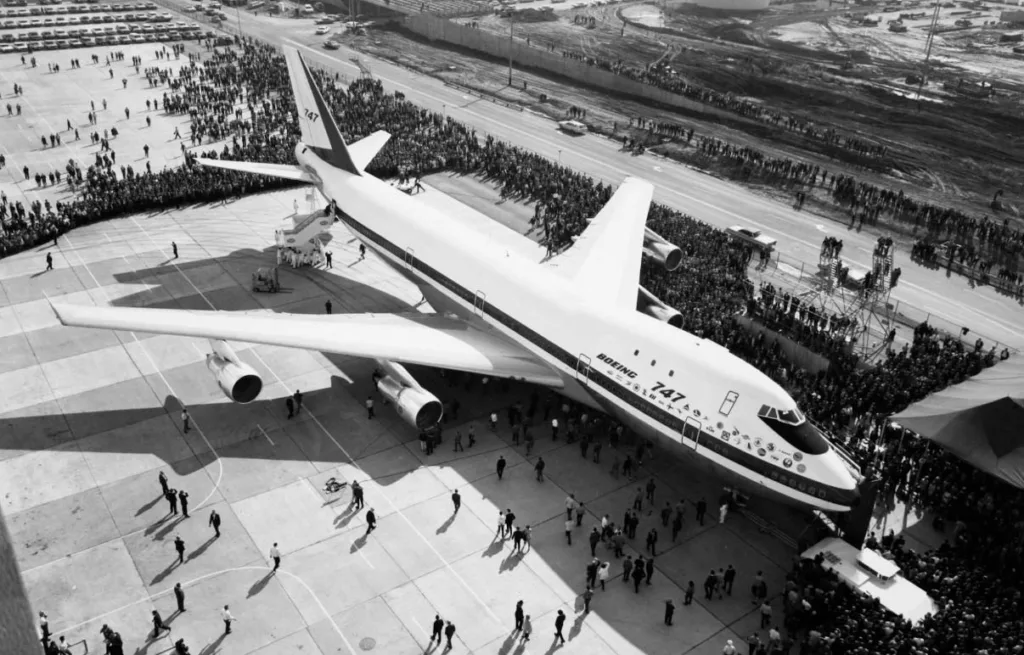Dewesoft recently released a blog post titled “How they did it: Testing the Boeing 747 Jumbo Jet” it is a fantastic read. It delves deeply into the complexities and innovations involved in testing one of the most iconic aircraft in aviation history the Boeing 747.
Summary of Dewesoft’s Blog on Testing the Boeing 747 Jumbo Jet
Firstly, it begins with Boeing’s initial design for a large military transport aircraft in 1963. Despite losing the competition to Lockheed it laid the groundwork for the development of a commercial passenger jet. Prompted by a request from Pan American Airlines. Boeing embarked on creating the world’s first wide-body commercial jet. Firstly, leading to a $500 million order for 25 planes.
Facing numerous challenges, including the need for a new assembly facility, and adapting airports to accommodate the larger aircraft. Boeing managed to design and build the 747. Joe Sutter, reassigned from the 737 development to lead the 747 program, played a crucial role in its development. The 747 required powerful jet engines, leading to collaboration with Pratt & Whitney for the development of the JT9D turbofan engine, despite initial technical issues.
The 747 underwent extensive testing, including flight, stall, control surface, and engine testing, to ensure its safety and reliability. Over 10 months, more than 1,000 tests were conducted. This occurred on five different 747 test planes. The 747’s first commercial flight took place on January 22, 1970, marking the beginning of its successful service history, which included serving as Air Force One and a Shuttle Carrier Aircraft for NASA.
The blog highlights the 747’s impact on aviation. Including its role in lowering air travel costs and ushering in the era of wide-body jets. Despite being surpassed by the Airbus A380 in size, the 747 remained a significant figure in aviation for over 50 years. With its final unit delivered to Atlas Air. The story of the 747 is depicted as a testament to Boeing’s innovation and perseverance, overcoming technical and logistical hurdles to create an iconic aircraft that revolutionised air travel.
How this blog is relevant to Dewesoft
Dewesoft provides advanced data acquisition, processing, and analysis solutions, often used in various industries for testing, monitoring, and optimisation purposes. Their products and services are relevant to aerospace, automotive, energy, mechanical engineering, and many other sectors.
This article highlights the technology used 60 years ago to perform the extensive tests to ensure the 747’s safety and reliability. You can see where Dewesoft’s potential role fits should they have existed back in the 1960’s.
The Boeing 747 was a large and complex aircraft and presented unique challenges in terms of testing and data analysis. Dewesoft’s innovative solutions, which often combine hardware with sophisticated software, would have played a crucial role in addressing these challenges. This would have included everything from vibration analysis and noise level measurement to engine performance testing and structural assessments.
Today Dewesoft DAQ Systems are used by leading aerospace companies worldwide. Such as NASA, ESA, Space X, Airbus, Boeing, and Lockheed Martin just name a few. Their systems handle every kind of physical measurement. Including advanced structural dynamics, acoustics, and electrical power testing.
For more information on Dewesoft’s product range in Australia and New Zealand, contact us.
